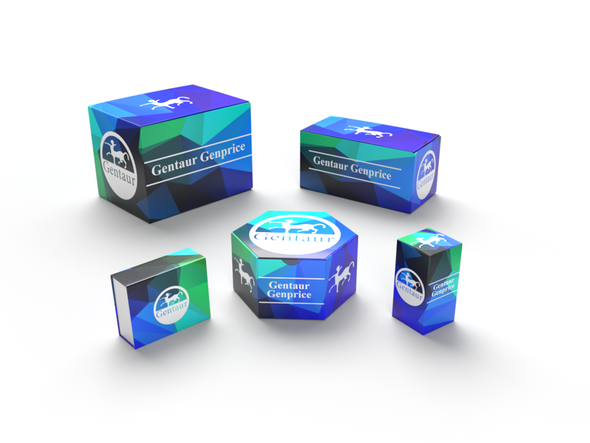Description
BCA-1 Antibody | XP-5106 | Gentaur UK, US & Europe Distribution
Host: Rabbit
Reactivity: Human
Homology: N/A
Immunogen: Produced from sera of rabbits pre-immunized with highly pure (>98%) recombinant hBCA 1 (human B Cell-Attracting Chemokine-1) .
Research Area: Chemokines & Cytokines, Antibody Pairs
Tested Application: E, WB
Application: ELISA:
To detect hBCA 1 by direct ELISA (using 100 μL/well antibody solution) a concentration of at least 0.5 μg/mL of this antibody is required. This antigen affinity purified antibody, in conjunction with compatible secondary reagents, allows the detection of 0.2 - 0.4 ng/well of recombinant hBCA 1.
Western Blot:
To detect hBCA 1 by Western Blot analysis this antibody can be used at a concentration of 0.1 - 0.2 μg/mL. Used in conjunction with compatible secondary reagents the detection limit for recombinant hBCA 1 is 1.5 - 3.0 ng/lane, under either reducing or non-reducing conditions.
Specificiy: N/A
Positive Control 1: N/A
Positive Control 2: N/A
Positive Control 3: N/A
Positive Control 4: N/A
Positive Control 5: N/A
Positive Control 6: N/A
Molecular Weight: N/A
Validation: N/A
Isoform: N/A
Purification: Anti-hBCA 1 specific antibody was purified by affinity chromatography employing immobilized hBCA 1 matrix.
Clonality: Polyclonal
Clone: N/A
Isotype: N/A
Conjugate: Unconjugated
Physical State: Lyophilized
Buffer: N/A
Concentration: N/A
Storage Condition: BCA-1 antibody is stable for at least 2 years from date of receipt at -20˚C. The reconstituted antibody is stable for at least two weeks at 2-8˚C. Frozen aliquots are stable for at least 6 months when stored at -20˚C. Avoid repeated freeze-thaw cycles.
Alternate Name: BLC, BCA1, ANGIE, BCA-1, BLR1L, ANGIE2, SCYB13, BLC, C-X-C motif chemokine 13, Angie
User Note: Centrifuge vial prior to opening. Reconstitute in sterile PBS containing 0.1% BSA to a concentration of 0.1-1.0 mg/mL.
BACKGROUND: B lymphocyte chemoattractant is a CXC chemokine strongly expressed in the follicles of the spleen, lymph nodes, and Peyer's patches. It preferentially promotes the migration of B lymphocytes (compared to T cells and macrophages) , apparently by stimulating calcium influx into, and chemotaxis of, cells expressing Burkitt's lymphoma receptor 1 (BLR1) .






